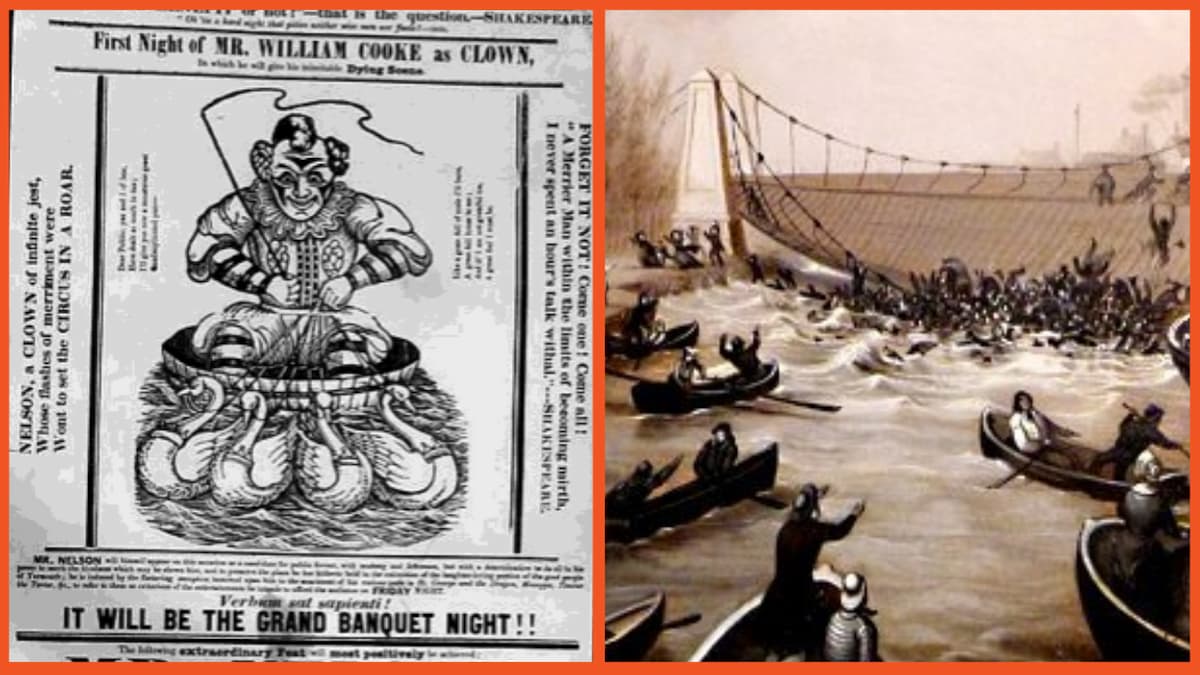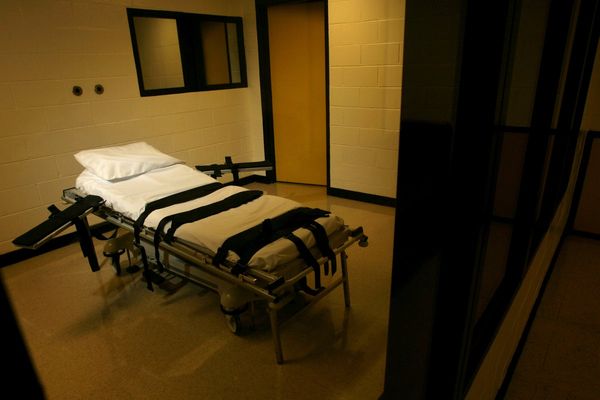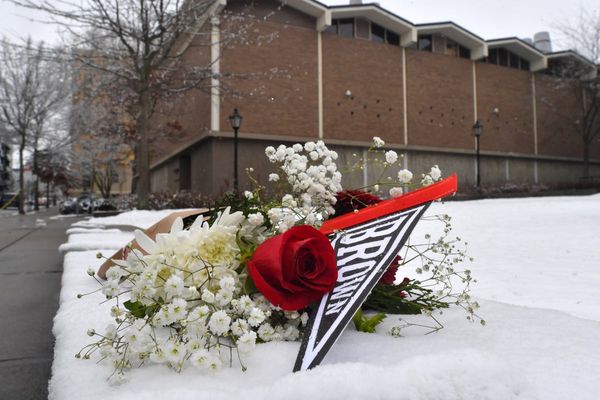
Clowns may not be everyone’s cup of tea but for people in Victorian Britain, the prospect of seeing one sail up river in a bathtub pulled by four geese was too alluring to resist. In Great Yarmouth, a crowd had gathered on a suspension bridge stretching across the river Bure to watch the ridiculous spectacle, but their joy and laughter would soon turn into pain and anguish.
In 1845 a large crowd had gathered on the Yarmouth suspension bridge to watch the novel and weird publicity stunt. According to Snopes, the incident occurred on a Friday evening in May, with people chowing up to see an act known as “Mr. Nelson.” The show was all a part of William Cooke’s circus and flyers from the time depicted Cooke, dressed as the clown, sitting in a bathtub with four swans pulling him along.
There wasn’t much to do on a Friday night in mid-19th century Yarmouth, (to be fair there isn’t a lot to do now either), so people were happy to go and watch this seemingly innocent act. Thousands of spectators showed up along the river to watch Mr Nelson travel upstream with hundreds standing on a suspension bridge. Unfortunately, it wasn’t designed to hold such a weight.
The bridge collapses
As the clown made his journey up the river the spectators flocked to the bridge with reports from the time stating that many were crowding on the south side. The weight actually caused a visible dip under the pressure. Before anyone could warn the spectators of the imminent danger a loud crack was heard and the bridge gave way.
The bridge collapse brought some 400 spectators down along with it into the waters below. Onlookers who weren’t on the bridge acted quickly to save those who had fallen into the river but of those 400 it was reported that 79 people lost their lives with 51 of those deaths being children under the age of 14. As far as bridge collapses go, this was one of the most deadly.
Such a large loss of life obviously had a lasting impact on the community. William Cooke, AKA Mr. Nelson the clown, reportedly felt “a very deep feeling of distress,” over the tragic incident. Of course, he could not have known the tragedy that would result from his stunt. An inquest into the incident found a welding defect on the bridge was what caused the structure (which was only 16 years old) to collapse. The inferior materials and labor used to construct it were condemned by the inquest.
168 years later, in 2013, a memorial was erected at the sight of the tragedy to commemorate the lives that had been lost on that fateful Friday evening in May.







